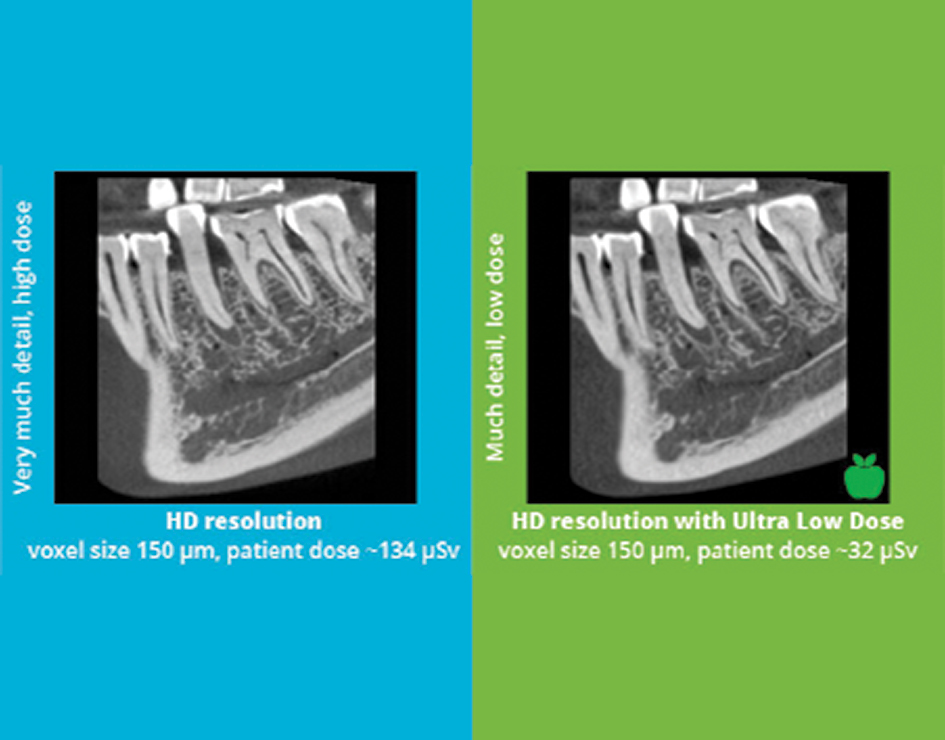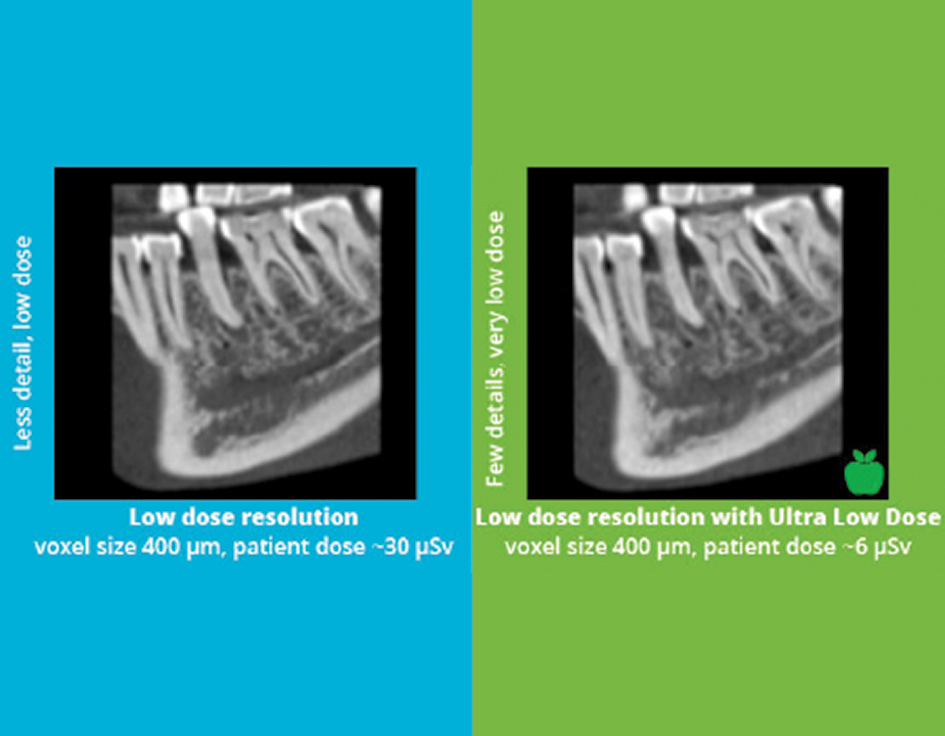 Dentistry.co.uk assesses the scientific evidence on the effectiveness of the Planmeca ultra low dose imaging protocol.
Dentistry.co.uk assesses the scientific evidence on the effectiveness of the Planmeca ultra low dose imaging protocol.
This article is intended to get readers thinking about the dose of their X-ray device, and start them asking manufacturers to show their research when they claim that they have an ultra-low dose machine – without loss of image quality.
Planmeca claims that its ultra low dose protocol is the world’s leading method for acquiring CBCT images at low effective patient doses without a statistical reduction in diagnostic image quality. It can allow clinicians to gather more information than from standard 2D panoramic images at an equivalent – or even lower – patient dose.
As dental imaging continues to evolve, questions regarding reduced X-ray exposure and patient safety are set to take on an ever-increasing role.
According to the well-known ALARA principle (‘as low as reasonably achievable’), imaging doses must be kept as low as possible: patients must not be exposed to a higher dosage than needed to acquire images of sufficient diagnostic quality.
The findings in a study by Dr John Barrett Ludlow indicate that reduced patient doses can be achieved without a loss in diagnostic quality by using the Planmeca ultra low dose protocol.
Dr Ludlow is a professor in the radiology section of the Department of Diagnostic Sciences and General Dentistry at the University of North Carolina School of Dentistry. He is renowned for his extensive radiology research.
CBCT technology
Cone beam computed tomography – CBCT – has been one of the most essential technological innovations in dentistry over the past two decades. The imaging technique is used to capture high quality 3D images of the oral and maxillofacial region, revealing intricate information on airways, hard tissue, nerve canals and dentition in a single scan.
Three-dimensional CBCT images provide clinicians with vastly more information than traditional two-dimensional panoramic images. This enables more precise treatments to take place and consequently improves the overall level of care.

Proven low dose imaging
While standard patient doses in general have reduced over the years, Planmeca’s pioneering ultra low dose imaging protocol allows effective patient dose to be lowered even further. The company claims it can be used with all voxel sizes and in all imaging modes to capture 3D images at a significantly lower dose than standard imaging. All this can be done without a statistical reduction in diagnostic image quality.
The Planmeca ultra low dose imaging protocol’s effectiveness has been confirmed in the scientific study led by the renowned radiologist Dr Ludlow.
The study’s conclusion states that: ‘An average reduction in dose of 77% was achieved using ultra low dose (ULD) protocols when compared with standard protocols. While this dose reduction was significant, no statistical reduction in image quality between ULD and standard protocols was seen. This would suggest that patient doses can be reduced without loss of diagnostic quality’.
The study – Dosimetry of Orthodontic Diagnostic FOVs Using Low Dose CBCT protocol by JB Ludlow and J Koivisto – is available from Planmeca.
Knowledge is power
Attentive clinicians can see differences in image quality for themselves, but they still need to rely on others to tell them what the effective patient dose is. Planmeca suggests that not all manufacturers can reliably provide users with such information. The company can give prospective and existing customers clear information on the effective patient doses of its CBCT units.
To find out more about how to turn your practice into an ultra low dose practice, visit: www.planmeca.com/dealers.
When shopping for a CBCT unit, be sure to exercise your right to receive all necessary information on the product. Always ask for accurate info on patient doses and compare the difference in image quality between standard and low dose images.


